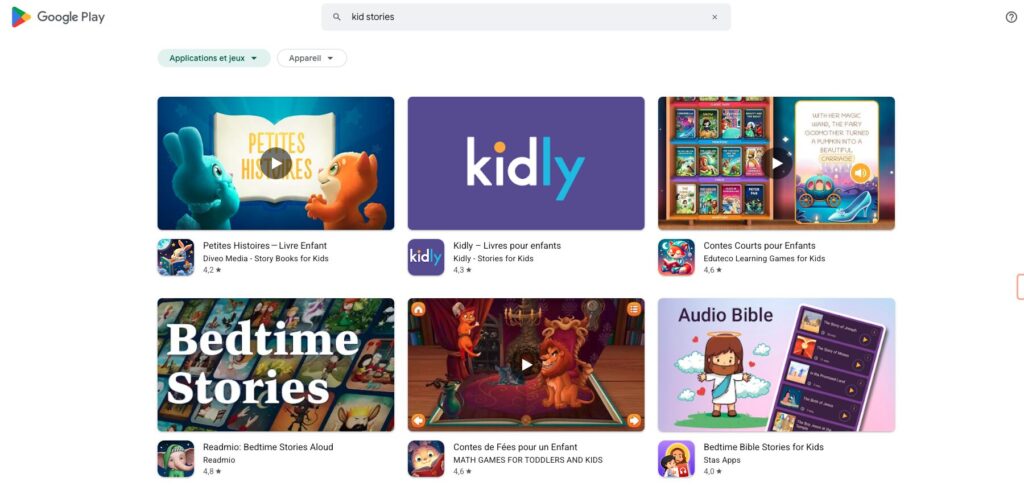As a parent, you’ve likely wondered whether that cozy bedtime story is helping or hindering your little one’s rest. I’ve been there too, tucking my child in with a favorite book, hoping it’s the perfect way to end the day. But is it really?
Dr. Sarah Mitchell, a sleep expert, emphasizes that shared reading time can create a calm routine and strengthen the bond between parent and child. It’s more than just a story—it’s a moment to fill their emotional tank before they drift off.
From my own experience, even a short session can make a big difference. The key is consistency. Keeping the reading space in the room where your child sleeps helps signal that it’s time to wind down.
In the next sections, we’ll explore the benefits, challenges, and practical tips to make bedtime reading a positive part of your routine. Let’s dive in and find out how to make this cherished ritual work for your family.
Understanding the Role of Bedtime Reading in Child Development
The magic of a bedtime story goes far beyond the pages of a book. It’s a powerful tool that shapes your child’s emotional and cognitive growth. According to Dr. Sarah Mitchell, a sleep expert, this nightly ritual does more than prepare your kid for sleep—it builds a foundation for lifelong learning and bonding.
How Bedtime Stories Influence Sleep Routines
Bedtime stories create a predictable routine that signals it’s time to wind down. This consistency helps children transition smoothly from playtime to sleep. Dr. Mitchell explains, “A calm, familiar activity like reading can reduce bedtime resistance and stalling.”
For younger kids, repeating the same story can be comforting. Older children benefit from more complex tales that challenge their imagination. This balance ensures the routine remains engaging while meeting developmental needs.
Emotional and Cognitive Benefits
Sharing a story fosters a strong parent-child bond. The physical closeness and shared experience provide emotional security. This reassurance helps kids feel safe and loved, making bedtime less stressful.
Cognitively, bedtime stories boost language skills and creativity. They introduce new words, concepts, and ideas, encouraging kids to think beyond their immediate world. Over time, this can lead to improved school readiness and executive function.
As Dr. Mitchell notes, “The emotional benefits of shared reading extend far beyond sleep. They influence overall growth and well-being.”
The Science Behind Bedtime Reading and Sleep Quality
Science reveals how a nightly habit can improve rest. Studies show that a consistent routine can significantly enhance sleep quality for both kids and adults. Let’s explore the research behind this simple yet powerful practice.

Research Insights from Sleep Studies
A 2021 study involving 991 participants found that those who engaged in nightly stories reported a 14% improvement in sleep quality. This group also experienced fewer disruptions during the night, leading to more restful sleep.
Another survey highlighted that 81% of parents felt both they and their kids slept better after a shared story. This calming activity helps reduce stress hormones, creating a peaceful transition to sleep.
Impact on Mental Wellbeing and Relaxation
Reading before sleep isn’t just about rest—it’s about mental health. Studies show that this practice lowers cortisol levels, the hormone linked to stress. This reduction promotes relaxation and emotional balance.
For parents, this routine offers a moment to unwind and connect with their child. It’s a win-win for family health and bonding.
| Study | Participants | Key Findings |
|---|---|---|
| 2021 Sleep Study | 991 | 14% improvement in sleep quality |
| Parent Survey | N/A | 81% reported better sleep for kids and parents |
| Cortisol Research | N/A | Reduced stress hormones, improved relaxation |
Even in today’s busy world, taking a few extra minutes to unwind with a book can yield significant benefits. The science is clear: a nightly story is more than a tradition—it’s a tool for better health and rest.
Practical Tips for Including Bedtime Stories in Your Routine
Incorporating stories into your nightly schedule doesn’t have to be complicated. With a few simple steps, you can create a calming routine that benefits both you and your little one. Let’s explore how to make this cherished time work for your family.
Choosing Age-Appropriate Books and Stories
Selecting the right book is key to keeping your child engaged. For babies, opt for simple stories with bright pictures and minimal text. Toddlers enjoy tales with a bit more narrative, while preschoolers thrive on longer, imaginative stories.
Dr. Sarah Mitchell suggests, “Limiting choices to 2-3 books helps prevent overwhelm and keeps the focus on the story.” Rotate these selections every couple of weeks to maintain interest and excitement.
Establishing a Consistent and Effective Routine
Consistency is the cornerstone of a successful bedtime routine. Set aside a specific time each night for shared reading. For younger kids, 5-10 minutes is ideal, while older children may enjoy 10-20 minutes of storytime.
Here are some practical tips to get started:
- Create a cozy reading nook with a small basket of selected books.
- Use clear, simple instructions to set expectations, like “We’ll read one story, then it’s time to sleep.”
- Keep the environment calm and free from distractions.
This structured approach not only improves sleep quality but also nurtures a love for books that can last a lifetime.
Expert-Recommended Dos and Don’ts for a Calming Bedtime Environment
Creating a peaceful bedtime environment starts with expert-recommended strategies. As a parent, you want to ensure your child feels calm and secure as they drift off to sleep. Experts like Dr. Sarah Mitchell and Kate Rumsby emphasize the importance of structure and consistency in this nightly ritual.
Setting Limits and Managing Book Choices
One of the first steps is setting clear limits. Choose 2-3 books to avoid overwhelming your child. This helps maintain focus and prevents stalling. Dr. Mitchell advises, “A smaller selection keeps the routine predictable and calming.”
It’s also essential to pick age-appropriate stories. For younger kids, opt for simple narratives with soothing themes. Older children may enjoy more complex tales, but ensure they’re not too stimulating. This balance helps create a serene atmosphere.
Using the Right Tone and Reading Style
Your voice plays a crucial role in setting the mood. Speak softly and use a steady pace to create a relaxing rhythm. Subtle voice modulation can make the story more engaging without overstimulating your child.
Kate Rumsby suggests, “Focus on the characters’ emotions and use deliberate phrasing to enhance the calming effect.” This approach transforms the session into a soothing ritual that prepares your child for sleep.
| Dos | Don’ts |
|---|---|
| Set a consistent reading schedule | Let book choices overwhelm the routine |
| Use a calm and steady tone | Read in a rushed or loud voice |
| Choose age-appropriate stories | Select overly stimulating or complex books |
| Create a cozy reading nook | Allow distractions like screens or toys |
By following these expert tips, you can turn bedtime into a cherished and calming experience for both you and your child. Consistency and the right approach make all the difference.
Benefits and Challenges for reading before bed children
Bedtime stories can be a double-edged sword for families. While they offer numerous advantages, they also come with a few hurdles. Let’s explore both sides to help you make the most of this cherished ritual.
Pros: Bonding, Literacy, and Relaxation
One of the biggest benefits of bedtime stories is the bond it creates between you and your little one. According to a survey by OnePoll for ThriftBooks, 75% of parents believe this routine strengthens family connections. It’s a moment to connect emotionally and share a love for books.
Literacy skills also get a boost. Research shows that kids who are read to regularly develop a vocabulary 1.5 times larger than those who aren’t. This exposure to new words and ideas helps them excel in school and beyond.
Lastly, bedtime stories promote relaxation. A calm, steady voice and a familiar routine signal to your child that it’s time to wind down. This can lead to better sleep quality for everyone.

Cons: Stalling Bedtime and Potential Overstimulation
Despite the benefits, challenges can arise. One common issue is bedtime stalling. Toddlers often ask for “just one more page,” delaying sleep. Setting clear limits can help manage this behavior.
Another challenge is overstimulation. Books with exciting plots or vivid illustrations can make it harder for your child to settle. Choosing calming stories with soothing themes can prevent this issue.
| Benefits | Challenges |
|---|---|
| Strengthens family bonds | Potential for bedtime stalling |
| Boosts literacy and vocabulary | Risk of overstimulation |
| Promotes relaxation and better sleep | Requires consistent boundaries |
Finding the right balance is key. Adjustments like setting a timer or choosing shorter stories can help. Consistency and clear boundaries ensure this routine remains a positive part of your little one’s day.
Conclusion
Ending the day with a story can be a powerful way to connect and unwind. This simple routine not only strengthens family bonds but also supports your child’s development and sleep quality. Experts agree that consistency and the right approach make all the difference.
From boosting language skills to creating emotional security, the benefits are clear. Yet, it’s important to adapt the routine to your child’s needs. Whether it’s choosing calming tales or setting clear limits, small tweaks can lead to big improvements.
As a parent, you have the tools to turn this nightly ritual into a cherished tradition. Embrace the journey, and watch how these moments shape your child’s world—one story at a time.
FAQ
Is it beneficial to include stories in my child’s nighttime routine?
Absolutely! Sharing a book at night helps create a calming atmosphere, strengthens your bond, and supports language development. It’s a wonderful way to wind down together.
Can bedtime stories improve my little one’s sleep quality?
Yes, they can. Studies show that a consistent nighttime ritual, like reading, signals to the brain that it’s time to relax, making it easier for your child to drift off.
How do I choose the right book for my kid’s age?
Look for engaging, age-appropriate stories with simple words for younger kids and more complex plots for older ones. Picture books are great for toddlers, while chapter books work for school-aged children.
What if my child gets too excited during storytime?
Opt for calming tales and use a soothing voice. Avoid overly stimulating or scary themes. Setting a time limit can also help keep the experience peaceful.
How long should our nighttime reading session last?
Aim for 10-15 minutes, depending on your child’s age and attention span. The goal is to create a relaxing transition to sleep, not to overstimulate.
Can bedtime reading help with my child’s literacy skills?
Definitely! Regular exposure to books enhances vocabulary, comprehension, and a love for learning. It’s a fun and effective way to boost their language development.
What if my kid keeps asking for “one more story”?
Set clear boundaries by agreeing on a specific number of books beforehand. This helps manage expectations and keeps the routine consistent.
Are there any downsides to reading before sleep?
While rare, some kids might get overstimulated or use stories to delay bedtime. Choosing calming books and sticking to a routine can help avoid these challenges.




